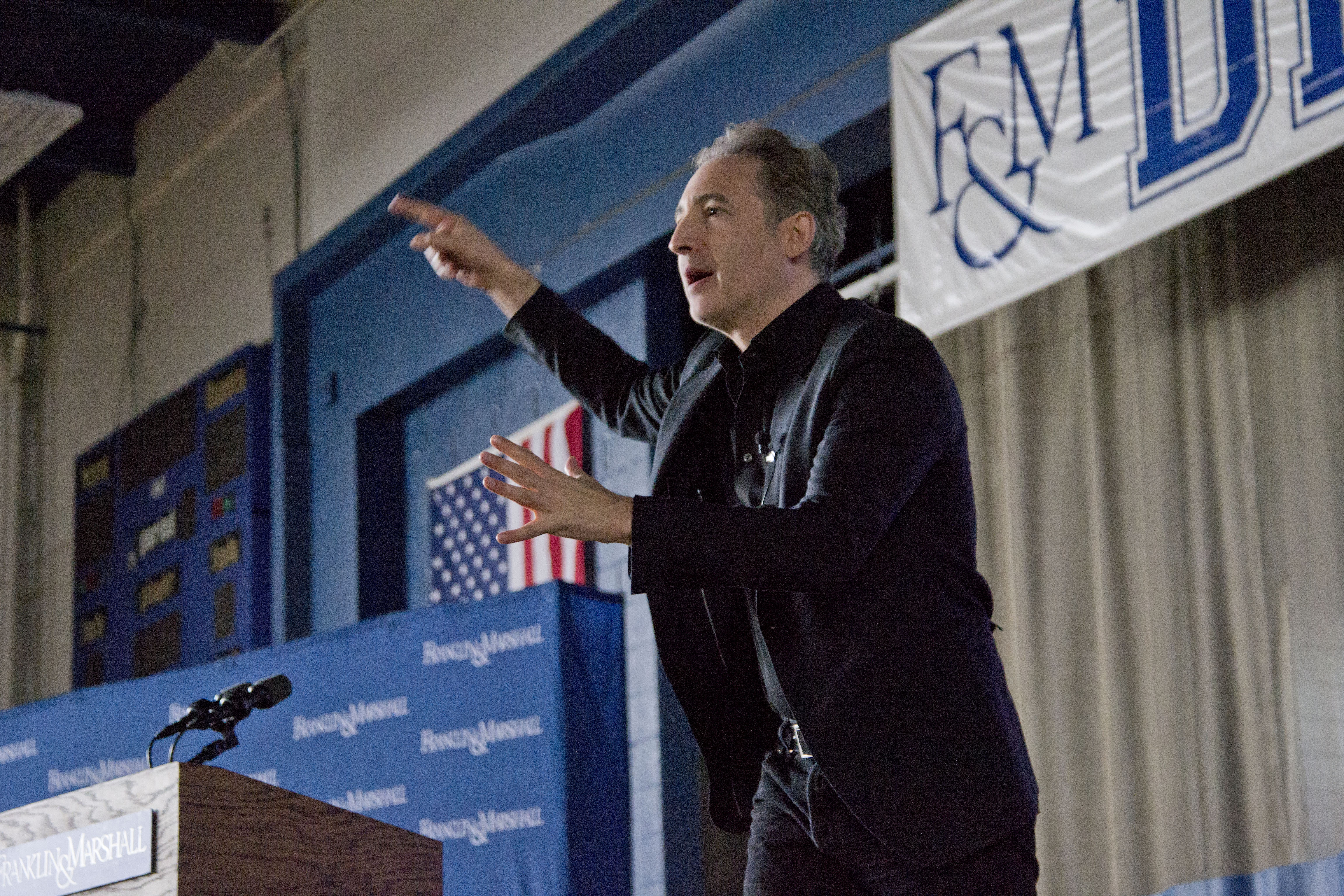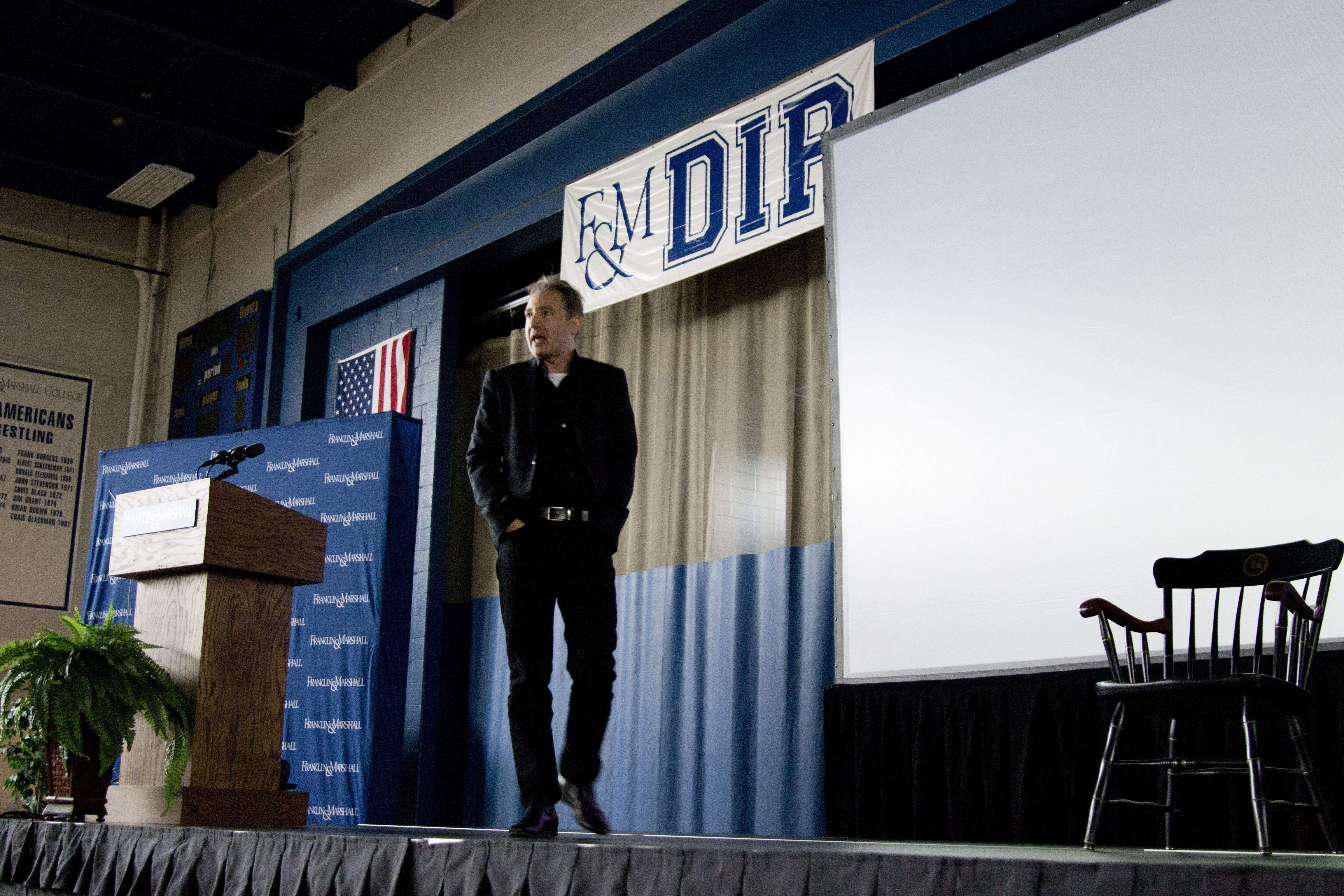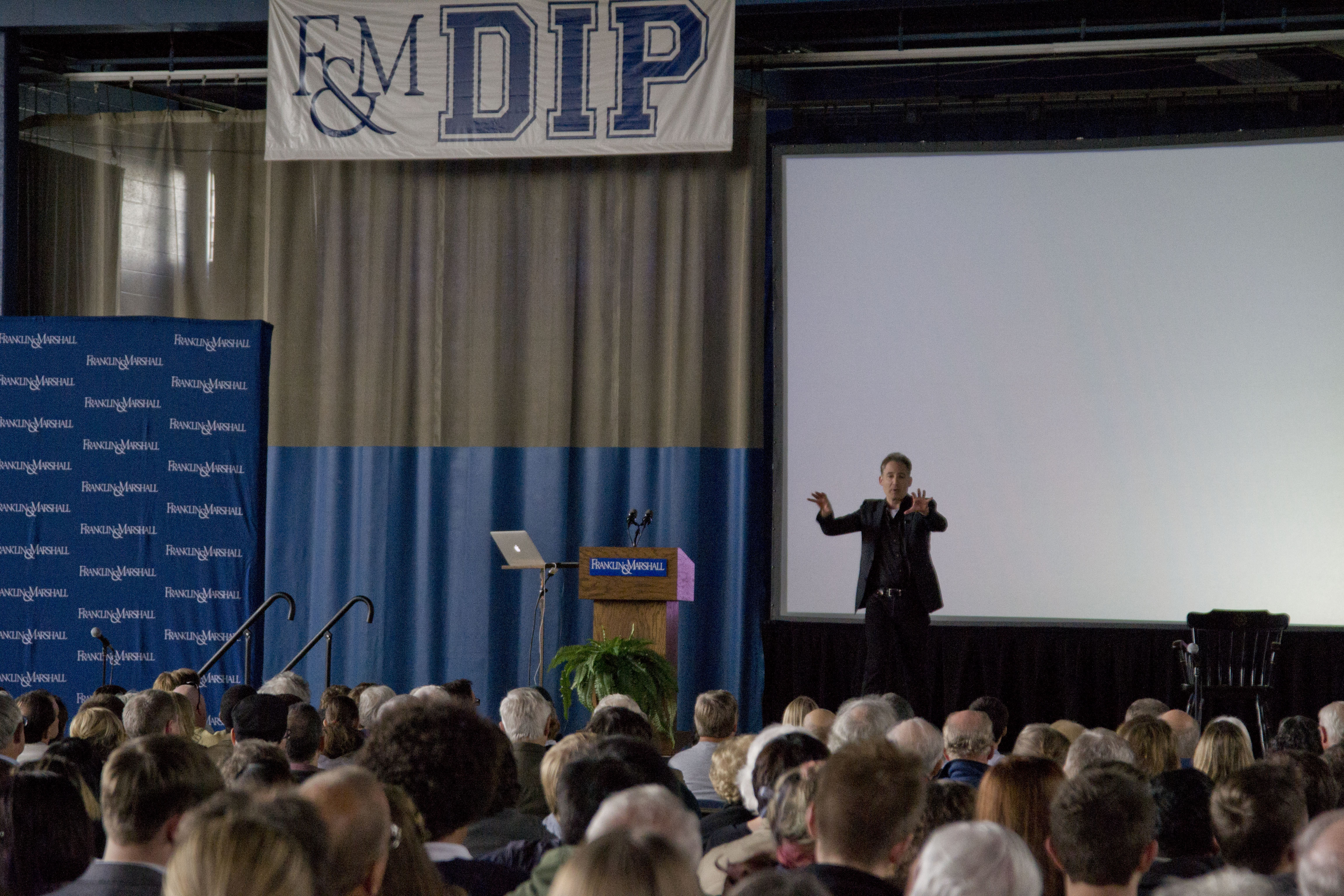By Julia Chirls, Staff Writer
The College welcomed Brian Greene, theoretical physicist, string theorist, and this year’s Mueller Fellow to speak at Common Hour and give a talk entitled “Explaining the Elegant Universe.”
Greene’s world-wide following has been earned because of his extensive research in applying string theory to cosmological questions in ways everyone can easily understand.
In 1984, Greene received his undergraduate degree from Harvard University and, in 1986, received his doctorate from Oxford University, where he was a Rhodes Scholar. He is currently a professor of physics and mathematics at Columbia University.
Greene is the author of many books, including his first and bestseller The Elegant Universe: Superstrings, Hidden Dimensions, and the Quest for the Ultimate Theory. He has appeared on television and has guest-starred as himself on the CBS sitcom The Big Bang Theory.
Greene began his talk by describing a bedtime story he shared with his son.
“I probably got a little carried away, you know,” Greene said. “I’m talking about all these aliens flying around space and talking about the speed of light. I don’t really know if he’s getting it or not; but then he turned to me and he said, ‘Dad, the speed of light? What about the speed of dark?’”
Greene used this exchange as a way to define what it really means to be a scientist. He said scientists must embrace innocent wonder, as his son did during those moments.
“We are willing to venture into the unknown without concern,” he said. “Whether we are going along with the status quo, or whether we are going to get the answer that people are looking for, that is what it means to be a scientist.”
Greene laid the groundwork for his discussion of the universe by telling three stories, each of which he believes have had an effect on the world’s way of thinking.
“Each of [these] is a good illustration of scientists being willing to talk about weird, strange ideas that may be wrong, probably are wrong, but nevertheless completely transform the process of science by pushing us into new directions, which may yield ideas that deepen our understanding of how the world works,” Greene said.
In the first story, he applauded Isaac Newton’s triumph in the 1600s of establishing the understanding of the force of gravity, which became the basis for today’s thinkings. Gravity depends on two things: how big the objects are and how far apart the objects are from each other.
After describing his reverence for Newton’s work, Greene began referring to a “thinker.”
“There is no such thing as an authority who has already given the answer to various issues about the universe preventing you from re-asking questions that have ostensibly been answered in the earlier era,” Greene said. “And of course I’m referring to Albert Einstein. Albert Einstein began to think about gravity.”
Einstein realized there was a piece of Newton’s theory that was missing, specifically in describing the mechanism of gravity. Greene explained that Einstein was strongly motivated to figure out how gravity works, a challenge he undertook for 10 years. This led to the discovery of the General Theory of Relativity, which was confirmed in 1919.
Greene then used an analogy of a bowling ball and a rubber sheet to simplify the understanding of the theory. When a rubber sheet lies flat, a bowling ball rolls on a straight path. The same rubber sheet, when warped and rolled, causes the bowling ball’s path to curve.
“Einstein basically says, ‘Take that idea, and apply it to the universe,’” Greene said. “Instead of a rubber sheet, think space. The idea is the object warps the environment and now it affects another body, for instance, the Earth around the sun.”
Greene continued with a story of Karl Schwarzschild, a German mathematical scientist who used his time on the Russian front during World War I to put his scientific knowledge to work.
“What he found is what we call the Black Hole Solution equation, a sketch of the underlying mathematical equation,” Greene explained. “Space is going over the edge of a black hole at the speed of light. Nothing can go faster than the speed of light. What happens if you throw an object into the black hole? What happens to the information in that object? If you take your wallet and you throw it towards the black hole, a copy of the information it contains gets smeared on the surface of the black hole and gets stored on the surface of the black hole, just like data is stored in your computer.”
Greene presented a final story in which he explained the Big Bang Theory and the structure of the universe. He began by establishing the Big Bang as a theory of cosmic evolution and how the universe evolved just after the moment it came into existence.
Greene continued by saying there is leftover energy in the universe for more big bangs, which would create a whole collection of universes. Greene worries, though, that future astronomers will look to the pure black space and see no light shining from the galaxies — because they will have moved so far apart from each other — and thus arrive at false conclusions about how the universe came to be.
Overall, Greene embraces the fascinating time period in which we live, which gives us the opportunity to observe and wonder. This time allows one to continually search for the truths of how the world got here and to look for the answers to questions of the origins of the cosmos.
“We live in a remarkable time when deep truths of observation, that will evaporate from observation, are still available to us,” Greene said. “So that, to me, is the greatest motivation to work hard, keep trying to figure out the cosmos, and one day have some deep understanding of how we got here. Maybe that will give us some insight, if we’re lucky, into why we are here.”
First-year Julia Chirls is a staff writer. Her email is jchirls@fandm.edu.


